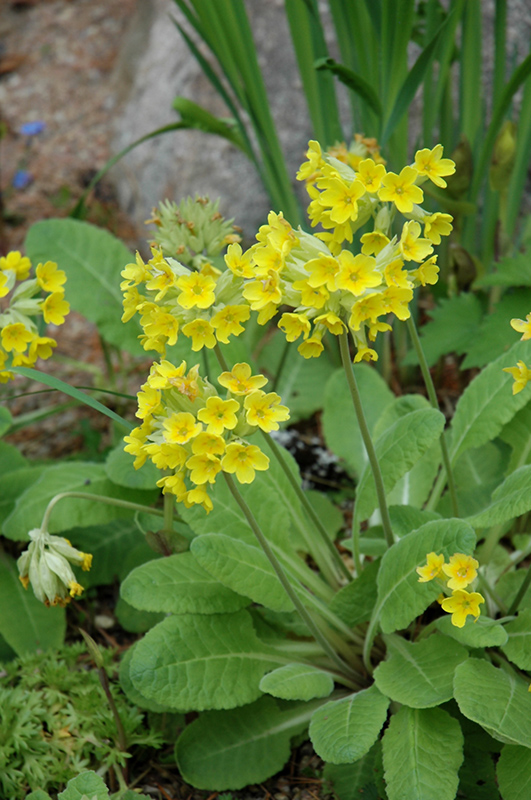Plant Height: 5 inches Flower Height: 12 inches Spacing: 6 inches
Sunlight:
Hardiness Zone: 4 Other Names: True Oxlip Description: This lovely selection produces upright stems with clusters of fragrant, butter yellow trumpet flowers with gold centers, above a rosette of bright green leaves in mid-spring; excellent in containers and window boxes Ornamental Features Oxlip features delicate clusters of lightly-scented buttery yellow trumpet-shaped flowers with gold throats rising above the foliage in mid spring. Its crinkled oval leaves emerge chartreuse in spring, turning green in color throughout the season. Landscape Attributes Oxlip is an herbaceous perennial with tall flower stalks held atop a low mound of foliage. It brings an extremely fine and delicate texture to the garden composition and should be used to full effect. This is a relatively low maintenance plant, and should be cut back in late fall in preparation for winter. Gardeners should be aware of the following characteristic(s) that may warrant special consideration; Oxlip is recommended for the following landscape applications; Planting & Growing Oxlip will grow to be only 5 inches tall at maturity extending to 12 inches tall with the flowers, with a spread of 8 inches. When grown in masses or used as a bedding plant, individual plants should be spaced approximately 6 inches apart. Its foliage tends to remain low and dense right to the ground. It grows at a fast rate, and under ideal conditions can be expected to live for approximately 5 years. As an herbaceous perennial, this plant will usually die back to the crown each winter, and will regrow from the base each spring. Be careful not to disturb the crown in late winter when it may not be readily seen! This plant performs well in both full sun and full shade. It does best in average to evenly moist conditions, but will not tolerate standing water. It is not particular as to soil type or pH. It is somewhat tolerant of urban pollution, and will benefit from being planted in a relatively sheltered location. Consider applying a thick mulch around the root zone in both summer and winter to conserve soil moisture and protect it in exposed locations or colder microclimates. This species is not originally from North America. It can be propagated by division.![]()
![]()
![]()
![]()
![]()
![]()
![]()
![]()
![]()
![]()
![]()
![]()
Characteristics
Applications
Ornamental Features
This guide is an online resource representing many of the varieties that we carry over the course of the season, and is intended for informational purposes only. Inventory varies seasonally, so we cannot guarantee that every plant will be in stock at all times - please contact the store directly for current availability. It does not include our entire selection of plants, so be sure to visit our store to see varieties that may not be represented on this list.


